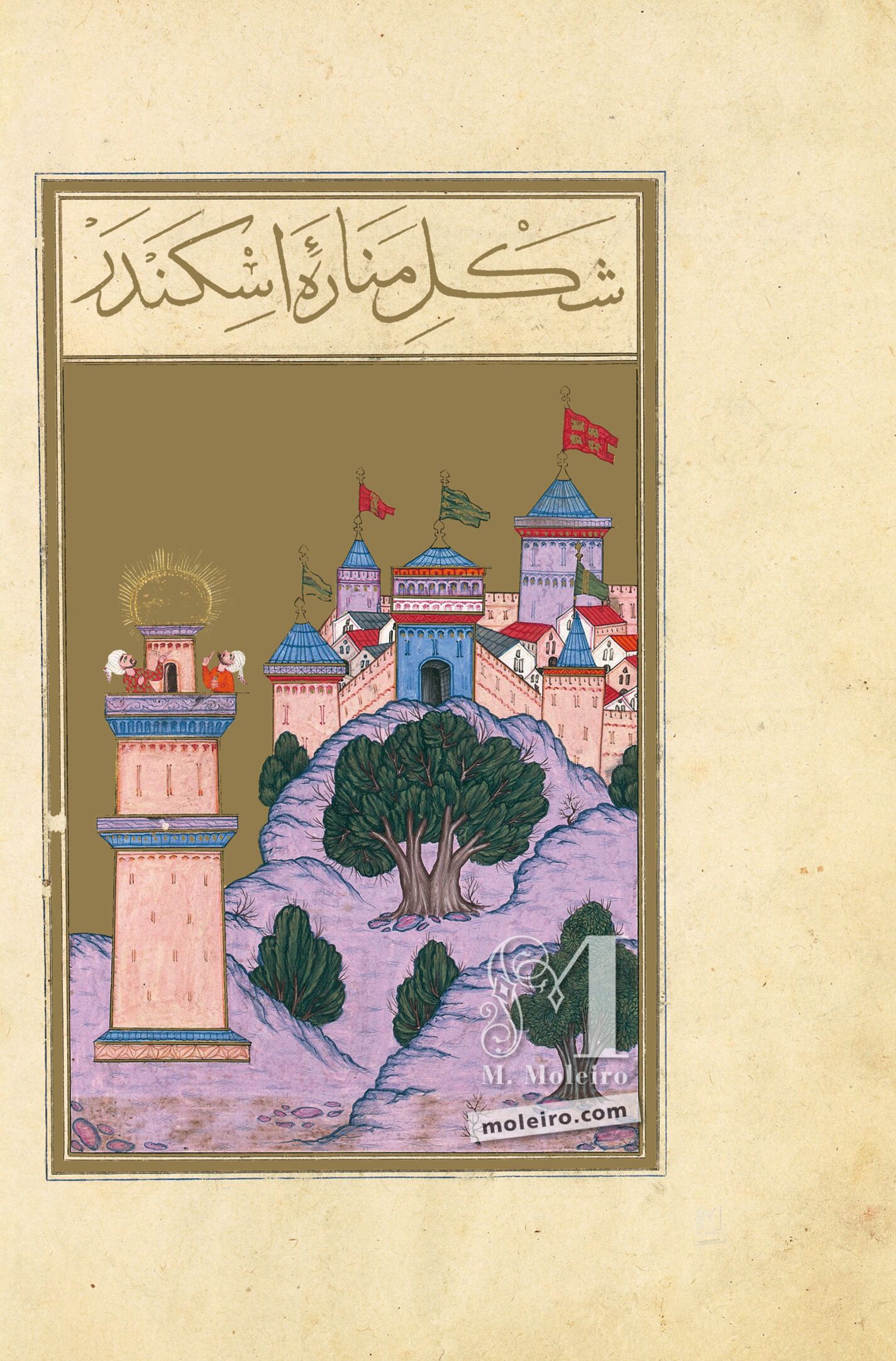Among the wonders of the ancient world was the famous lighthouse of Alexandria which collapsed in the medieval period and was later replaced on the same location by the late fifteenth-century Fort of the Mamluk sultan Qaitbey. The tall structure had a large mirror at the top that reflected sunrays to guide the ships that had headed for the port city of Alexandria since antiquity. The mirror may also have functioned as a giant lens able to ignite the wood of an enemy vessel when pointed at it and set it on fire.
The illustration in the Kitab al-bulhan correctly places the tall building in the water (f. 36r). The Ottoman painter, perhaps because at this point in history the lighthouse was a distant memory and he was aware of Qaitbey’s imposing military fort, disregarded the original function of the building entirely and placed it in the midst of a hilly landscape with trees. A fortified city like a medieval European fortified city with turrets and flags waving atop them lies behind the tallest hill, probably representing the Mamluk fort or some kind of improbable depiction of Alexandria. The two men on the uppermost balcony of the lighthouse are staring enthusiastically at the mirror, which shone so brightly that the painter transformed it into a solar disk.
Stefano Carboni
The Metropolitan Museum of Art
Curatorial Assistant in Islamic Art
(Fragment of the Book of Felicity commentary volume)

Among the wonders of the ancient world was the famous lighthouse of Alexandria which collapsed in the medieval period and was later replaced on the same location by the late fifteenth-century Fort of the Mamluk sultan Qaitbey. The tall structure had a large mirror at the top that reflected sunrays to guide the ships that had headed for the port city of Alexandria since antiquity. The mirror may also have functioned as a giant lens able to ignite the wood of an enemy vessel when pointed at it and set it on fire.
The illustration in the Kitab al-bulhan correctly places the tall building in the water (f. 36r). The Ottoman painter, perhaps because at this point in history the lighthouse was a distant memory and he was aware of Qaitbey’s imposing military fort, disregarded the original function of the building entirely and placed it in the midst of a hilly landscape with trees. A fortified city like a medieval European fortified city with turrets and flags waving atop them lies behind the tallest hill, probably representing the Mamluk fort or some kind of improbable depiction of Alexandria. The two men on the uppermost balcony of the lighthouse are staring enthusiastically at the mirror, which shone so brightly that the painter transformed it into a solar disk.
Stefano Carboni
The Metropolitan Museum of Art
Curatorial Assistant in Islamic Art
(Fragment of the Book of Felicity commentary volume)